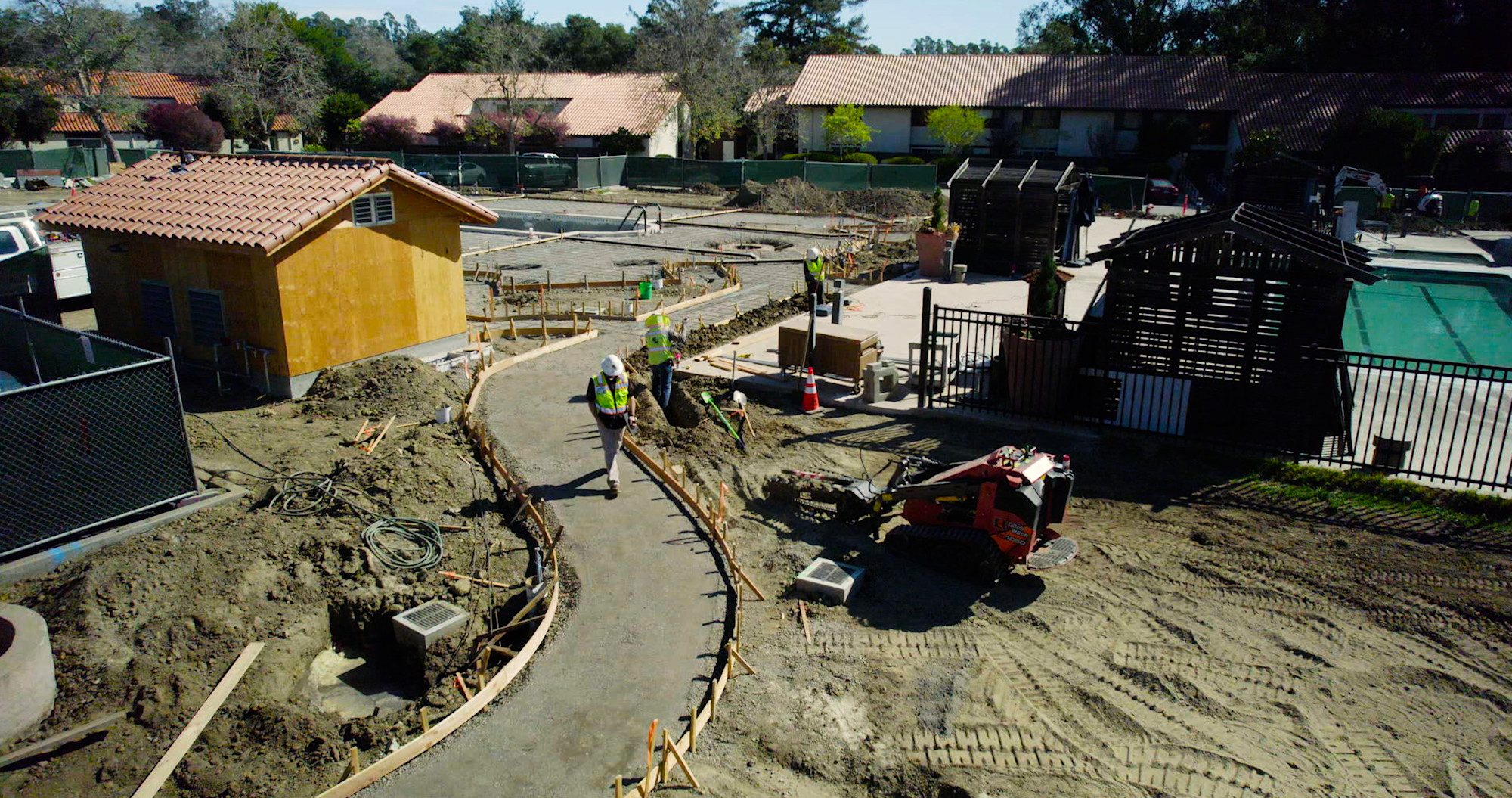It’s 11:47 PM, and your regional manager is still hunched over spreadsheets, desperately trying to make the numbers match before tomorrow’s client meeting.
In a $330.58B landscaping market growing at a 6.7% CAGR, this isn’t just overtime—it’s a red flag. These late-night sessions may feel like dedication, but they’re a symptom of inefficiency that can quietly cost your business six figures a year.
→ Inefficient internal processes often result in unnecessary costs and increased operating expenses, ultimately undermining your company’s profitability.
Time at this level isn’t just money—it’s momentum.
Optimizing operational efficiency is crucial for enhancing business performance and maintaining competitiveness.
And without operational systems that move at the speed of your business, you’re not just losing hours.
You’re losing ground.
Time isn't just money—it's momentum
In enterprise landscaping, inefficiencies compound, eroding profitability and stalling growth, making it critical to identify and address them early to prevent an ongoing, worsening drain of resources.
They empower your teams to act faster, deliver consistent results, and invest their time in growing the business, rather than chasing the basics.
→ By unifying workflows and data, integrated platforms help improve efficiency across the organization.
The Compounding Effect of Inefficiency
Consider these common scenarios:
Sales outpace operations. Your sales team wins new contracts quickly, but siloed tools delay onboarding, leading to job site confusion and underwhelming client experiences.
Outdated equipment tracking. Equipment managers rely on outdated spreadsheets, and by midday, the whole system falls apart due to scheduling conflicts, underutilisation, and unplanned downtime.
Lack of real-time visibility. Operations leaders manually chase updates and piece together insights, performing repetitive tasks to gather and update information, rather than proactively reacting to problems.
These are not isolated issues.
According to Aspire’s 2025 Landscape Industry Trends Report, 61% of enterprise landscaping companies operate with seven or more disconnected software solutions.
And while regional managers may insist they’ve “got it handled,” the midnight spreadsheet sessions suggest otherwise. What feels like control is often just damage control.
The results?
Delays that derail timelines
Inefficiencies that burn admin hours
Service inconsistency that weakens client trust
Compare that with the experience of Precision Landscape Management's experience, which transitioned from spreadsheets to a unified system and shifted from a net-negative position to a 6–7% net profit. That transformation came through real-time visibility, streamlined workflows, and accurate performance data. Integrated platforms don’t just save time—they unlock momentum.
Fragmented systems: The hidden time sink
Every day, hours vanish—quietly, invisibly—into broken processes and outdated tools.
Cutting costs alone is not enough if underlying inefficiencies are not addressed.
For growing landscaping companies, these hidden inefficiencies can snowball into real financial losses, highlighting the importance of process improvements to reduce costs.
Where Hours Disappear Daily
Where does the time go?
Double-entry and manual updates: Admin teams input the same data into multiple systems, such as job costing, payroll, and invoicing, resulting in wasted hours each week.
Communication is scattered across platforms. Critical updates are often buried in texts, group chats, calls, and emails. Information is missed. Crews show up unprepared or misinformed.
Project delays are due to a lack of coordination. Competing equipment needs aren’t visible across teams, so one job stalls while another hoards the tools. Effective project management can help prevent these delays by improving workflow integration and visibility.
Now multiply this across regions.
Operations managers spend hours gathering updates from different tools and departments. That’s not management—that’s survival. Optimizing production processes can help streamline operations and prevent time loss.
The Real Cost Framework
Run this simple time audit:
Calculate the weekly hours your leadership team spends solely on data collection or report reconciliation.
Multiply it by 50 working weeks.
Then multiply that by their fully loaded annual compensation.
After taking these steps, calculating your operational efficiency ratio can help quantify the impact of inefficiency by comparing operating expenses, cost of goods sold (COGS), and net sales.
That figure? It’s your growth killer number.
The hidden costs go deeper:
Labor inefficiencies: Field teams waiting for approvals or equipment
Revenue leakage: Invoicing errors that never get corrected
Lost opportunities: Declining complex or multi-site jobs because your systems can’t handle them
Lack of key performance indicators: Not tracking KPIs makes it challenging to identify and address inefficiencies across business functions
The Scale Problem
What works at $5M often breaks at $15M—especially when your systems weren’t built to scale.
North by Northwest in Austin, Texas, began like many in the landscaping industry: focused on residential clients and using off-the-shelf tools like QuickBooks and calendar apps to manage day-to-day operations.
However, as they sought to expand into commercial maintenance and HOA contracts, their residential-focused systems became a significant constraint.
Manual workarounds and disconnected tools weren’t just inefficient—they were holding the business back. When each region runs its own workaround, chaos scales faster than growth.
→ Fragmentation isn’t just an IT issue. It’s a leadership bottleneck—and it’s costing more than you think.
That changed with Aspire.
By integrating Aspire with PropertyIntel and Convex, North by Northwest unified its estimating, scheduling, and lead generation processes, transforming both internal workflows and the client experience.
Today, 70% of their business is commercial, and they’ve scaled operations to support a broader, more complex portfolio without compromising service quality.
As Vice President of Operations, Tiffany Peters puts it:
“All the tools working together have really helped show the customer that we’re ready, and we already know what they need and want before they have to ask for it.”
This proactive, data-driven approach replaced manual processes with automation and consistency—two essentials for growth at scale.
When each team runs on its tools and workarounds, expansion amplifies the chaos.
But when your systems scale with you, every new contract becomes an opportunity, not a crisis. With integrated systems and streamlined business processes, identifying growth opportunities, such as market trends and service gaps, becomes much easier, supporting continued business expansion.
Real-time visibility = Strategic agility
When you lead a multi-crew landscaping business, every decision counts, and delays are costly. Yet too many leaders still make choices based on data that’s days (or weeks) out of date.
Without real-time visibility, you’re flying blind.
Access to real-time data enables you to make more informed decisions by providing immediate, accurate insights into workflow inefficiencies, resource allocation, and project costs. These insights are crucial for effective management and financial planning.
In landscaping, every decision counts, and delays are costly. That’s why it’s essential to use real-time data to guide those decisions.
From Reactive to Predictive
The executive blindfold. If it takes three reports and two emails to determine last week’s labor costs, you’re already behind.
Real-time dashboards change the game. Live data on crew utilization, equipment availability, and labor cost variance enables fast, confident decisions.
Predict and adjust. Spot trends early by using real-time dashboards to make proactive adjustments. Reallocate resources before delays hit your schedule or your margins.
With Aspire, you get more than reports—you get a command centre for your entire operation. Learn more in our 2025 Landscape Industry Trends Report.
Turn Focus from the Past to Changing the Future
Before Aspire, P&L meetings at Par 3 were backward-looking—teams spent hours trying to explain what went wrong.
After implementation, those meetings became forward-focused strategy sessions.
Operations Director Brad Hill explains:
“Aspire is a solution that helps us improve landscaping services and get our clients what they need.”
Access to live performance metrics also supports a culture of continuous improvement, enabling ongoing efforts to enhance operational efficiency and refine business processes regularly.
Par 3 shifted from firefighting to future planning by replacing fragmented data with live performance metrics.
Competitive Advantages
Faster access to insights. No more digging. Data flows in real time from every branch, site, and team.
Proactive problem-solving. Catch schedule risks and cost overruns before they escalate.
Smarter resource use. Match labor, equipment, and hours to demand based on live conditions, not gut instinct. Real-time data enables greater operational efficiency across teams.
Visibility isn’t a reporting feature. It’s a competitive edge.
From meetings to movement: Reclaiming hours for growth
In enterprise landscaping, time isn’t lost in large chunks—it’s chipped away by manual coordination, duplicate data entry, and reactive meetings.
What could be strategy sessions often become troubleshooting forums.
By reducing bottlenecks in communication and workflow, organizations can free up valuable time for strategic initiatives and improve overall operational efficiency.
The Meeting Transformation
The trap Leadership teams spend countless hours chasing job updates, resolving conflicts, and validating data.
The shift Unified systems like Aspire provide real-time visibility into labor, job progress, and cost performance—freeing meetings to focus on growth, not guesswork.
The result Companies redirect that time into strategic initiatives, process refinement, and client satisfaction. Incorporating employee feedback into process refinement further enhances accountability and performance.
TruCo Services experienced this shift firsthand.
Before Aspire, their leadership operated on instinct and fragmented information, unable to track utilisation or job performance accurately. After implementation, they uncovered and corrected 3,000–5,000 hours of previously unallocated time per month.
“To sum it up in one word, it’s accountability,” said Operations Manager Nial Magoffin. “And you just can’t run a business at the magnitude we are without that.”
Quick Time Audit Framework
Track: Weekly admin hours spent on updates, reporting, and coordination
Multiply: Weekly hours × 50 weeks × loaded compensation
Project: Time and cost savings achievable through operational alignment
Success Pattern
The most profitable companies don’t work more—they work smarter.
Aligned systems reduce back-and-forth
Dashboards replace spreadsheets
Teams act on insights, not assumptions, leading to improved overall efficiency.
See how real-time visibility drives strategic growth and start reclaiming the hours that move your business forward.
Disconnected systems are losing you valuable time
The ripple effect of inefficiency extends to every aspect of your business, from client relationships to competitive positioning and enterprise valuation.
Lots of companies encounter similar challenges and must proactively manage payroll, taxes, and performance metrics to achieve success.
While your team burns the midnight oil reconciling spreadsheets, your competitors capture market share with streamlined operations. The companies pulling ahead aren’t working harder—they’re working smarter.
Ready to reclaim hours and redirect them toward profit?
Download our comprehensive ebook: “The Hidden Profit Killer: How Disconnected Systems Stall Landscaping Growth” to discover the complete cost framework, real case studies from $15M+ companies, and step-by-step assessment tools to identify your biggest operational leaks.
Don’t let another quarter slip by while competitors gain an operational advantage. Take action now to stay ahead by implementing the strategies outlined in this article.








